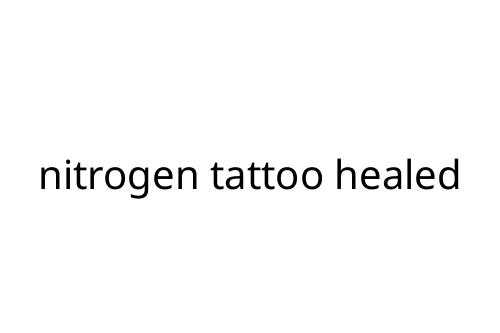nitrogen tattoo
Nitrogen tattoo isn’t a phrase you hear every day, but it’s a topic that’s recently gained attention in body modification discussions. At first glance, the term might suggest a new type of ink or trendy tattoo technique. The truth: a nitrogen tattoo is less an artistic statement and more a result of an industrial accident or workplace injury. This guide covers what nitrogen tattoos are, why they happen, and what you should know if you work around nitrogen in your job.
What is a nitrogen tattoo?
A nitrogen tattoo is not a cosmetic tattoo. In industrial and laboratory settings, liquid nitrogen is routinely used for everything from freezing materials to removing warts. When a high-pressure nitrogen leak or accident occurs, the force can embed tiny bits of dirt, clothing, or grease into the skin at high speed. The result is a dark mark under the skin — this is called a nitrogen tattoo. It happens fast, leaves a telltale stain, and is often permanent without medical intervention.
Causes and risk factors
Most nitrogen tattoos happen in environments where workers handle liquid or pressurized nitrogen. Common risk factors include:
- Accidental punctures in nitrogen tanks or pipelines
- Sudden release of high-pressure nitrogen during maintenance
- Inadequate protective equipment
In these situations, the gas or liquid can propel particles hard enough to penetrate the skin, leaving behind embedded material.
Health concerns and outcomes
Unlike traditional tattoos, a nitrogen tattoo isn’t intentional and can lead to serious complications. The embedded particles may trigger inflammation, infection, or even long-term tissue damage. The stain often persists unless surgically removed or treated by a dermatologist. Some people experience scarring or ongoing sensitivity at the site.
The main health risks include:
- Embedded foreign bodies, which may provoke immune responses
- Secondary infections
- Scarring and pigment changes
Immediate first aid, such as cleaning and covering the wound, helps reduce infection risk, but medical evaluation is always recommended.
Prevention: stay safe around nitrogen
The best way to avoid a nitrogen tattoo is prevention. If you work in a lab, medical facility, or industrial setting where nitrogen is present, take these measures:
- Wear protective clothing, including gloves and eye protection
- Ensure proper training on nitrogen handling
- Inspect hoses, pipes, and tanks regularly for leaks
- Follow lockout/tagout procedures before maintenance
- Never bypass safety equipment or rush safety steps
Supervisors and safety teams should emphasize incident reporting and quick medical attention if any skin puncture or discoloration occurs.
Takeaway
Nitrogen tattoos are an uncommon but preventable workplace injury. They’re not a new tattoo trend — they’re a warning sign. If you notice an unexplained mark after working with nitrogen, don’t ignore it. Seek medical advice promptly to reduce the chance of infection and scarring. As always, protective gear and proper protocol are your best defenses when handling hazardous substances like nitrogen.


